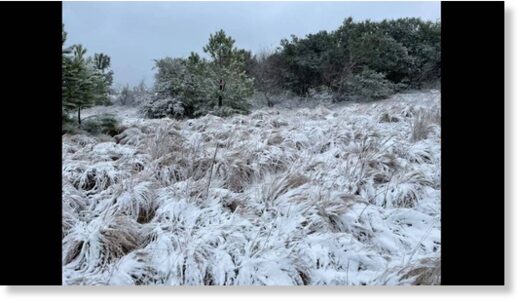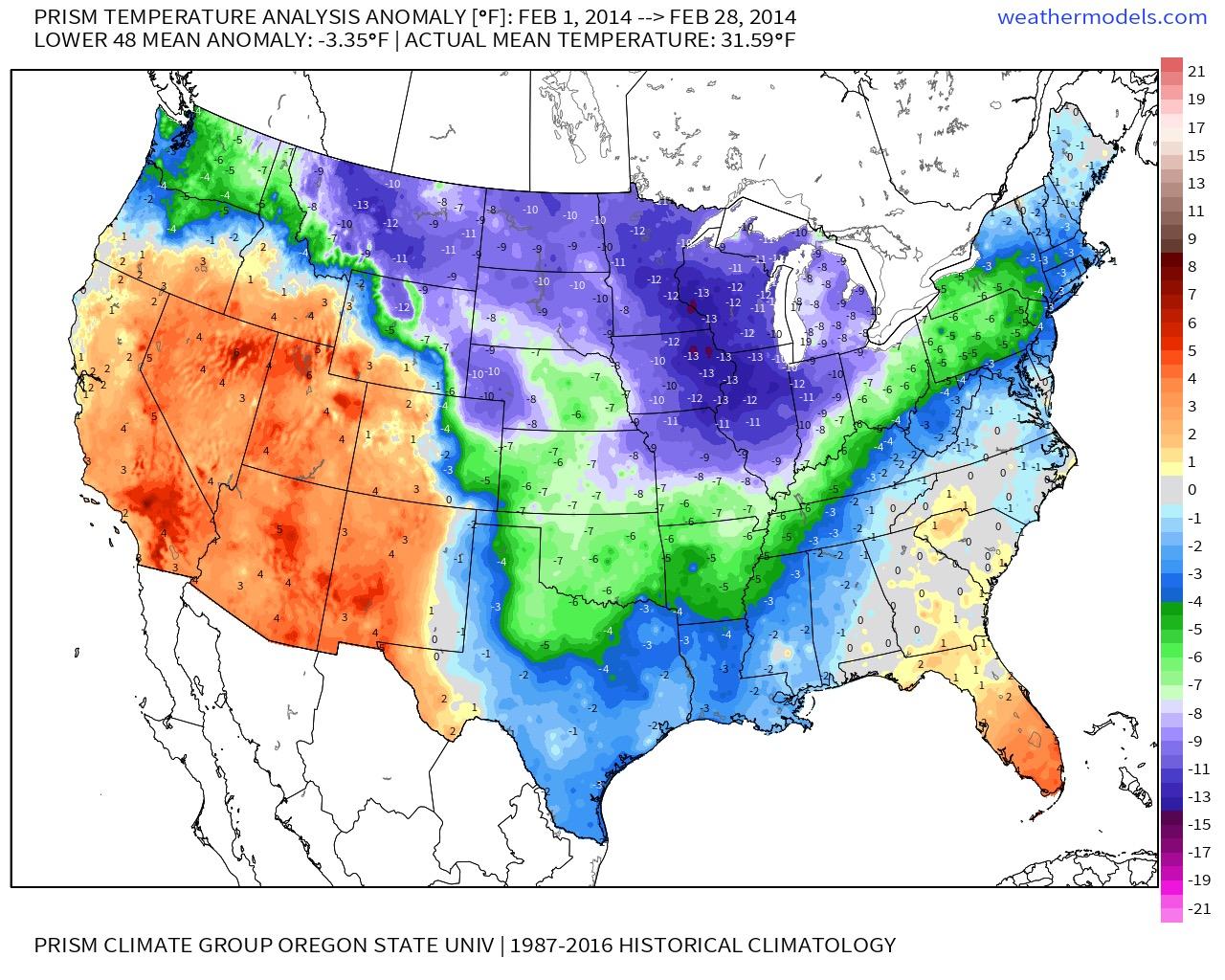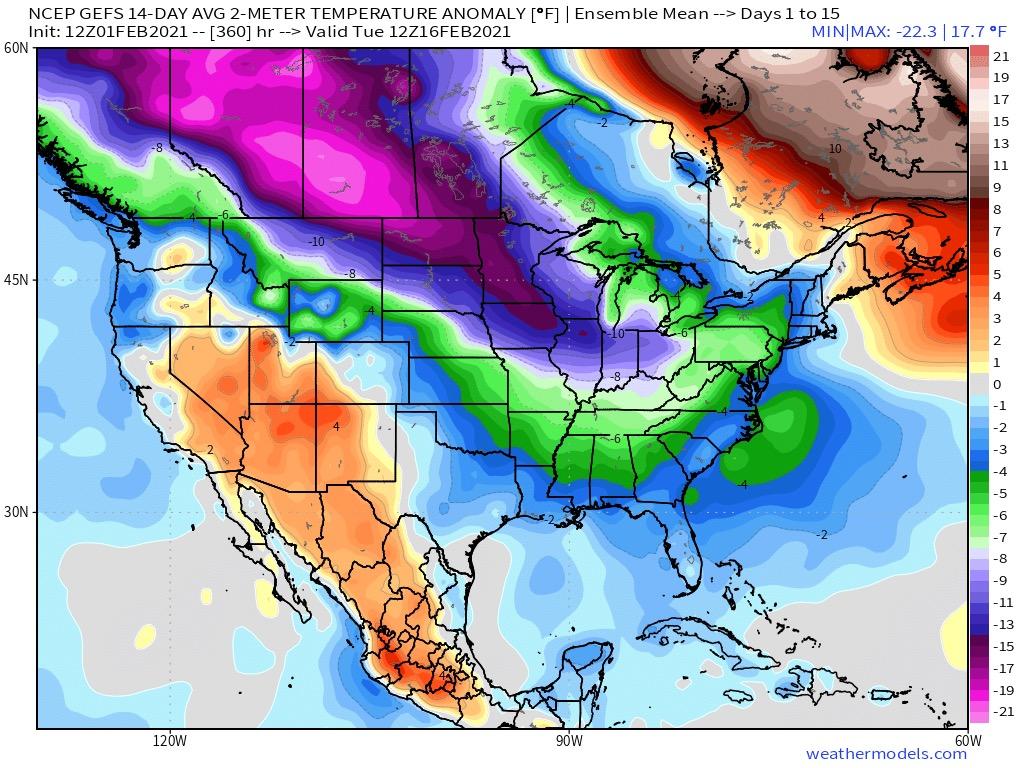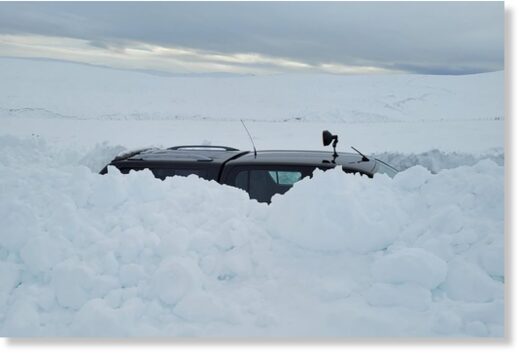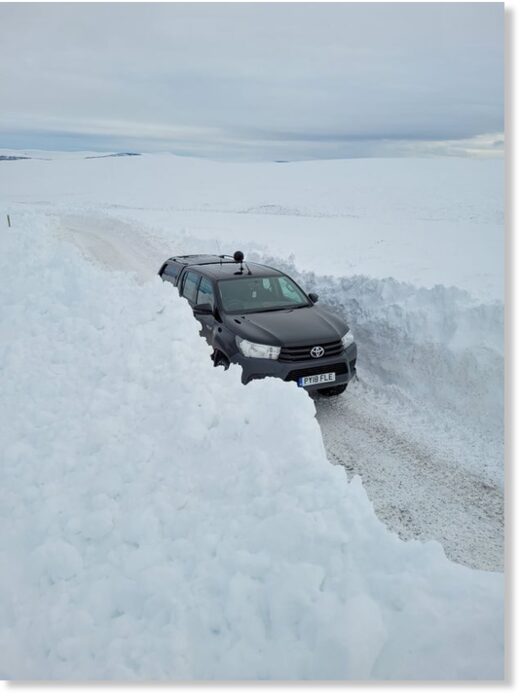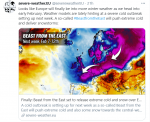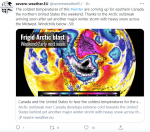Part 1 of 2:
33 Simple Bullet Points proving 'Global Warming' is caused by the Sun, not CO2 - by a geologist - Electroverse
33 SIMPLE BULLET POINTS PROVING ‘GLOBAL WARMING’ IS CAUSED BY THE SUN, NOT CO2 — BY A GEOLOGIST
FEBRUARY 2, 2021 CAP ALLON
Dr Roger Higgs (DPhil geology, Oxford, 1982-86)
Geoclastica Ltd and ResearchGate
Abbreviations:
‘AD’ = anno Domini
‘BC’ = years ‘before Christ’
‘BP’ = years ‘before present’, from radiocarbon dating. 0 is 1950AD by convention
~ = about/approximately
1) The IPCC (United Nations Intergovernmental Panel on Climate Change) has no geologists among the hundreds of authors of its last major report (2013-14) and at most 1 geologist in the next report (due 2022; see my Technical Note 2019-10). Thus IPCC focuses on only the last 170 years (since multiple reliable thermometer measurements began, ~1850), yet Earth is 26 million (sic) times older, 4.5 billion years. Geologists know that throughout this time Earth has constantly warmed or cooled (never static). Thus ‘climate change’ is nothing new; it is perfectly usual. During the last 11,650 years, our current ‘Holocene’ interglacial epoch, climate change has repeatedly been fast enough to cause collapse of civilisations (Bullet 20).
2A) The IPCC’s very existence relies on public belief in ‘Anthropogenic (man-made) Global Warming’ (AGW) by CO2 emissions. Most IPCC authors, mainly government and university researchers, are biased by strong vested interests in AGW (publications; continuance of salaries; research grants).
2B) Similarly, universities have sacrificed their impartiality by hosting institutes financially mandated to promote AGW. For example, London’s former bastion of scientific integrity Imperial College has, since 2007, housed the ‘Grantham Institute – Climate Change and the Environment’, founded and funded by investment magnate Jeremy Grantham (heavily involved in forest destruction for biomass energy according to the 2019 Michael Moore/Jeff Gibbs documentary ‘Planet of the Humans’). The ‘Tyndall Centre for Climate Research’ (founded 2000) has branches at the Universities of Cardiff, Manchester, Newcastle and Fudan, and also at the University of East Anglia, in the same building as the infamous IPCC-linked Climatic Research Unit (CRU; Wiki ‘Climategate’).
2C) Well-known scientists formerly associated with the IPCC have subsequently denounced its methods.
3) Claimed ‘97% consensus among scientists’ that AGW exists is a deception. It refers in fact to polls of recent publications by only ‘climate scientists’, i.e. atmospheric specialists, lacking deep-time perspective (Bullet 1), who deal with ‘climate models’ (Bullet 6). Graduation and employment of ‘climate scientists’ opportunistically boomed in the AGW hysteria since 1990, lavishly funded, creating a strong incentive for bias (Bullet 2). The vast majority of the world’s normal scientists, numbering millions and lacking any financial bias, are not part of the ‘consensus’, having never been polled, myself included. In November 2019 Wikipedia deleted its “List of scientists who disagree with the scientific consensus on global warming” (Bullet 29).
4) No informed person ‘denies’ global warming: it has been measured (Bullet 11). ‘Global-warming denier’ is a deceitful term, with intentionally despicable connotations, for doubters and deniers of ‘Anthropogenic (man-made) Global Warming’ (AGW), probably the majority of the world’s scientists.
5A) The “greenhouse effect … a slight misnomer” (Wiki; in fact a complete misnomer; see their references) … “is the process by which radiation from a planet’s atmosphere warms the planet’s surface” (Wiki, citing IPCC). This bold claim that Earth’s land- and ocean surfaces are warmed by the air is ‘backwards’. In truth the (solar-warmed) ocean warms the atmosphere, as shown by two observations: (1) ocean-surface water (covering ~70% of Earth) is almost everywhere warmer (fractionally) than the air above it; and (2) changes in global average surface air temperature lag 1 to 1.5 months behind corresponding changes in global sea-surface temperature. These two facts indicate that heat (only capable of flowing one way, from warmer to cooler) flows outward, from the ocean to the air, not vice versa. A truthful summary of the greenhouse effect is that solar energy absorbed at Earth’s surface is radiated back into the atmosphere as heat, some of which is absorbed on its way out to space by greenhouse gases. Thus greenhouse gases cause no warming; instead they reduce the air’s heat loss to space.
5B) CO2 is a ‘greenhouse gas’ (GHG). Due to the ‘saturation effect’, CO2’s theoretical heat-trapping ability sharply (logarithmically) declines as its concentration rises. CO2’s Climate Sensitivity (CS) is the hypothetical warming due to a doubling of CO2. IPCC ‘estimates’ CS, based on defective (Bullet 6) climate models (circular reasoning), as probably between 1.5 and 4.5C°, a 300% contrast! According to a landmark new paper by van Wijngaarden & Happer (2020), CS for doubling from 400 to 800ppm is theoretically 1.4 to 2.3C°, but their calculations assume cloud-free conditions; the effect of clouds, which cover about two-thirds of Earth at any moment (Wiki ‘Cloud cover’), is very uncertain (Bullet 5C).
5C) Despite CO2’s greenhouse-warming potential, evidently the Sun (not CO2) governed our climate for at least the last 2,000 years, based on good correlation between solar-magnetic output (SMO) and Earth’s average surface temperature (Bullet 12), in contrast to CO2’s non-correlation (Bullet 12B) except the partial coincidence (by chance) of its strong rise since 1850 (start of Industrial Revolution) versus ‘Modern Warming’ (1815 to present-day; Bullet 11) and SMO’s ~1700-1991 surge. This proves that CO2’s greenhouse-warming potential, already fallen logarithmically “well into the saturation regime”, is negated by feedbacks. Two natural feedbacks ignored in IPCC climate models are: (i) little known cloud feedback; and (ii) “potentially very important” increased biogenic ‘BVOC’ aerosol due to faster forest growth by warming & CO2 fertilization. (The only feedbacks listed in IPCC’s influential 2013 Fifth Assessment Report figure SPM.5 are man-made ones’, with very wide “uncertainty intervals”.) IPCC admits “aerosols and their interactions with clouds have offset a substantial portion of global mean forcing from … greenhouse gases. They … contribute the largest uncertainty”; and “quantification of cloud and convective effects in models, and of aerosol–cloud interactions, continues to be a challenge.” IPCC’s underestimation of negative feedbacks explains why climate models run too hot (Bullet 6), and why ‘runaway’ warming has apparently never occurred on Earth.
6A) Computer ‘climate models’ (by ‘climate scientists’; Bullet 3) are so full of assumptions (stacked upon other assumptions) as to be highly misleading at best, e.g. 1985-2015 warming forecast by 31 models turned out 2 to 4 times too high. Even pro-IPCC ‘tricky Wiki’ (Bullet 29) admitted: “Each model simulation has a different guess at processes that scientist don’t understand sufficiently well”. 6B) Climate models ignore three crucial factors: (i) natural cloud and aerosol-cloud feedbacks (Bullet 5D); (ii) large changes in solar magnetic output (SMO; Bullet 12A), driving global temperature changes according to the Svensmark Theory, denied by the IPCC (Bullet 14), which disingenuously says ‘total solar irradiance’ (TSI; varies in step with SMO but proportionally far less) varies much too little to affect climate, so CO2 must be in charge; likewise the CRU (Bullet 2B); and NASA, which went so far as to publish ‘Atmospheric CO2: Principal Control Knob Governing Earth’s Temperature’ in 2010; (iii) ‘ocean-lag’, the multi-decade delay between changes in SMO and correlative changes in temperature (Bullet 21). These three IPCC failings, ‘Sun denial’, ocean-lag omission, and feedback underestimation, render climate modelling conducted to date worthless.
7A) For much of the last 550 million years (Phanerozoic time), atmospheric CO2 was 2 to 10 times higher than now. Evolution flourished. Plant photosynthesis, the basis of all life, was stimulated by higher CO2 (Bullet 8). Extinction events due to overheating by CO2 are unknown.
7B) Throughout Phanerozoic time, CO2 seemingly correlated well with temperature (although all studies inevitably have low resolution). This is readily explained by warming oceans releasing CO2 and vice versa (Bullets 9, 10).
8A) Through Holocene time, atmospheric CO2 was a mere 250-285 ppm (i.e. near plant-starvation level of ~150 ppm; Wiki ‘CO2 fertilization effect’; also Bullet 27), until ~1850 when mankind’s industrial CO2 emissions began. Since then, atmospheric CO2 has climbed steeply. Proving that man’s emissions are the main driver of this post-1850 rise in CO2, ice cores show that the last five interglacial periods (including the Holocene) all reached levels of 250-300 ppm, i.e. a sort of ‘equilibrium’ value. CO2 today (January 2021), 415 ppm, is still only 0.04% of our atmosphere (i.e. less than half of one-tenth of 1%), far less than in the past (Bullet 7).
8B) The present CO2 level of 4165ppm is far from hazardous to human health, e.g. CO2 levels in American Navy submarines typically average 3,000-4,000ppm with no reported ill effects. Benefits of rising CO2, thanks to the ‘CO2 fertilization effect’, include expansion of natural forests (‘greening’ of the planet) and increased agricultural productivity, essential for feeding Earth’s burgeoning population. Thus, ironically, man’s production of CO2 by burning fossil fuels (for energy and transport) has unintentionally averted, or at least postponed, a global food crisis. Commercial growers inject CO2 into their greenhouses. “CO2 enrichment in greenhouses allows crops to meet there (sic) photosynthesis potential.” “For most crops the saturation point will be reached at about 1,000–1,300 ppm … Increased CO2 levels will shorten the growing period (5%–10%), improve crop quality and yield”.
9) Until man began adding industrial CO2 about 1850, global warming (determined from ‘proxies’ like tree rings) since the ~1815 cold peak of the Little Ice Age (~1250-1920) was accompanied by a very slight rise in CO2 (measured in ice cores). A simple explanation is the well-known release of CO2 by warming ocean water (decreasing its CO2-holding capacity).
10) Other evidence, besides Bullet 9, that rising CO2 is a consequence, not cause, of global warming is that Quaternary glacial-interglacial temperature changes were followed “very closely” by changes in CO2. Based on ice-core data, the time-lag is somewhere between 400 years and zero, possibly even slightly negative. However, based on direct thermometer and CO2 measurements covering the last few decades, changes in CO2 lag behind ~5 months according to Kuo et al. (1990) and 11-12 months according to Humlum et al. (2013).
11) Thermometer records since 1750 show 2.1C° warming (global land average) since 1815 (Little Ice Age nadir; Bullet 9). This ‘Modern Warming’ (name proposed here) was interrupted by two 30-year coolings (1880-1910, 1945-1975, 0.2C° each) and the 1998-2013 ‘Global warming hiatus’ (Wiki); and by frequent brief (1-3 years) minor coolings, some attributable to mega-volcano ‘winters’ (1-10years) and perhaps to El Niño/La Niña events (seldom if ever exceed 2 years). After the first 30-year cooling, global average warming was 1.3C° from 1910 to 2016 (slight cooling since then [Bullet 13]). In contrast, since the start of industrial CO2 additions ~1850 (Bullet 8), CO2’s rise has accelerated, with only a brief pause (1887-97) and a mini-reversal (1940-45), both during the 30-year coolings, and both attributable to CO2’s increasing solubility in a cooling ocean (Bullet 9). The 30-year coolings match solar-output downturns, after applying a temperature lag of ~100 years due to ‘ocean memory’ (Bullet 21). There is no other viable explanation.
12A) This unsteady ‘sawtooth’ (up-down) style of post-1815 ‘Modern Warming’ (Bullet 11) mimics the sawtooth rise in solar-magnetic output (SMO) from ~1700 (end of sunspot-defined ‘Maunder Minimum’) to 1991 (peak of Sun’s modern ‘Grand Maximum’ [GM; 1937-2004]). A good cross-match is obtained by applying a temperature delay of ~100 years (‘ocean-lag’; Bullet 21), thereby aligning the two 30-year coolings (Bullet 11) with two solar declines. SMO’s ~1700-1991 surge was both the strongest (amplitude) and highest in at least 9,000 years, increasing 350% from 1700 to 1950 and, in the 20th Century alone, 131% from 1901 to 1991, and 41% from 1964 to 1996. “The last period which showed similar high activity and also lasted as long as the current one was about 1700 years ago” (Steinhilber et al. 2008). That particular ~300AD GM caused warming (and drove a global 2-3m sea-level rise, the ‘Romano-British Transgression’, portending another such rise imminently (Bullet 24). Thus I propose that the Sun drove Modern Warming (via the Svensmark cosmic ray/cloud mechanism [Bullet 14]), with negligible or no help from CO2, in the same way that earlier (lesser) GMs of the last 8,000 years clearly correlate with (lesser) warmings (Bullet 12B).
12B) Similarly, since at least 2,000 years ago, solar-magnetic output (SMO) correlates well with temperature (proxy temperatures from tree rings, ice cores, etc. in the pre-thermometer era before 1750). Both graphs have a hockey-stick shape (Bullet 32): the ‘shaft’ is an overall ~1,200-year decline from ~400AD to the Little Ice Age (LIA; Bullet 9), with superimposed 50-200-yr smaller up-down ‘sawteeth’; the ‘blade’ is the post-1700 surge (Bullet 12A). Applying a temperature lag of ~100-150 years (Bullet 21) aligns: (i) the Sun’s ~300AD GM (Bullet 12A) and the ~450AD highest temperature of the last 2,000 years (possibly surpassed by Modern Warming); and (ii) the ~1700 LIA solar minimum and the 1815 LIA minimum temperature (Bullet 12A). Moreover, the graphs have the same proportionality: ~3:2 ratio of surge height versus sawtooth amplitude; and ~1:1 height ratio of the shaft and blade. In contrast, CO2’s correlation with temperature for the last 2,000 years is very poor: the only (partial) match is CO2’s surge since ~1850 (start of Industrial Revolution). CO2 mismatches are: (i) slight overall rise from 500AD into the LIA (i.e. ‘shaft’ gradient is backwards); (ii) sawteeth are minuscule; and (iii) the two 30-year solar- and temperature declines (Bullet 12A) are missing. Further back in time, despite decreasing proxy availability and looser dating, correlation is also evident for at least the last 8,000 years, superimposed on long-term slight cooling due to Earth’s declining axial obliquity since ~8,500BP (google Milankovitch orbital forcing).
13) 2016 was the warmest year ‘since records began’, i.e. only since ~1850, when a reliable global thermometer network existed. 2017, 2018 and 2019 were all cooler. (NB no volcanic mega-eruption since 1991). Yet CO2 is still rising. So every passing day that isn’t ‘warmest ever recorded’ for that date at multiple sites worldwide is awkward for the IPCC.
14) The breathtakingly elegant and simple ‘Svensmark Theory’ says rising solar-magnetic output, by deflecting more cosmic rays, reduces cloudiness. This allows more of the Sun’s warmth to heat the ocean and hence the atmosphere (Bullet 5A), instead of being reflected back out into space by clouds. In support, a NASA study of satellite data spanning 1979-2011 (during the ‘Modern Warming’; Bullet 12) showed decreasing cloud cover. The IPCC dismisses Svensmark’s theory.
15) Vocal climate scientist, computer modeller, IPCC lead author, and recipient of a 1999 US$1 million private donation to work on his alarming idea that man-made warming might stop “Atlantic conveyor belt” ocean circulation, with dire consequences for regional climate (cooling), ecosystems and society, Stefan Rahmstorf (Wiki) of the Potsdam Institute for Climate Impact Research wrongly said in 2008: “there is no viable alternative … [to CO2 as driver of 1940-2005 warming, as] … different authors agree that solar activity did not significantly increase”. Yet in 1999, physicist Dr Michael Lockwood FRS (Wiki) and co-authors wrote in prestigious Nature journal that from 1964 to 1996 “the total magnetic flux leaving the Sun has risen !p.!6!of!9!by a factor of 1.4” and from 1901 to 1992 by 2.3! Supporting Lockwood’s work, Steinhilber et al. (2010) showed that “Since the year 1700, the open solar magnetic flux has increased by about 350%”.







